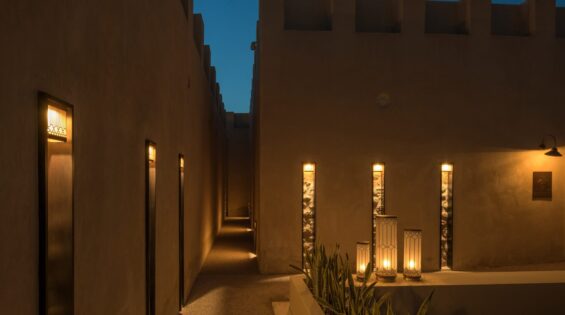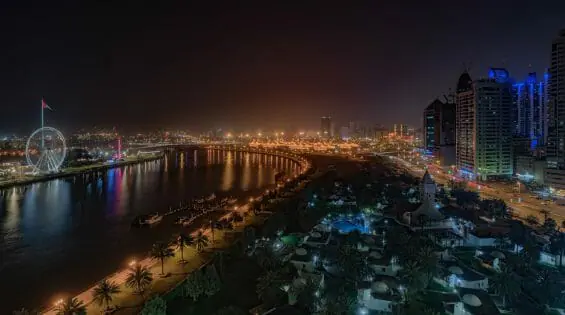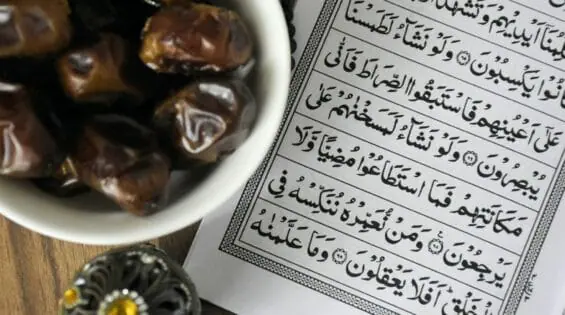Searching for the Emirates of Old in Sharjah
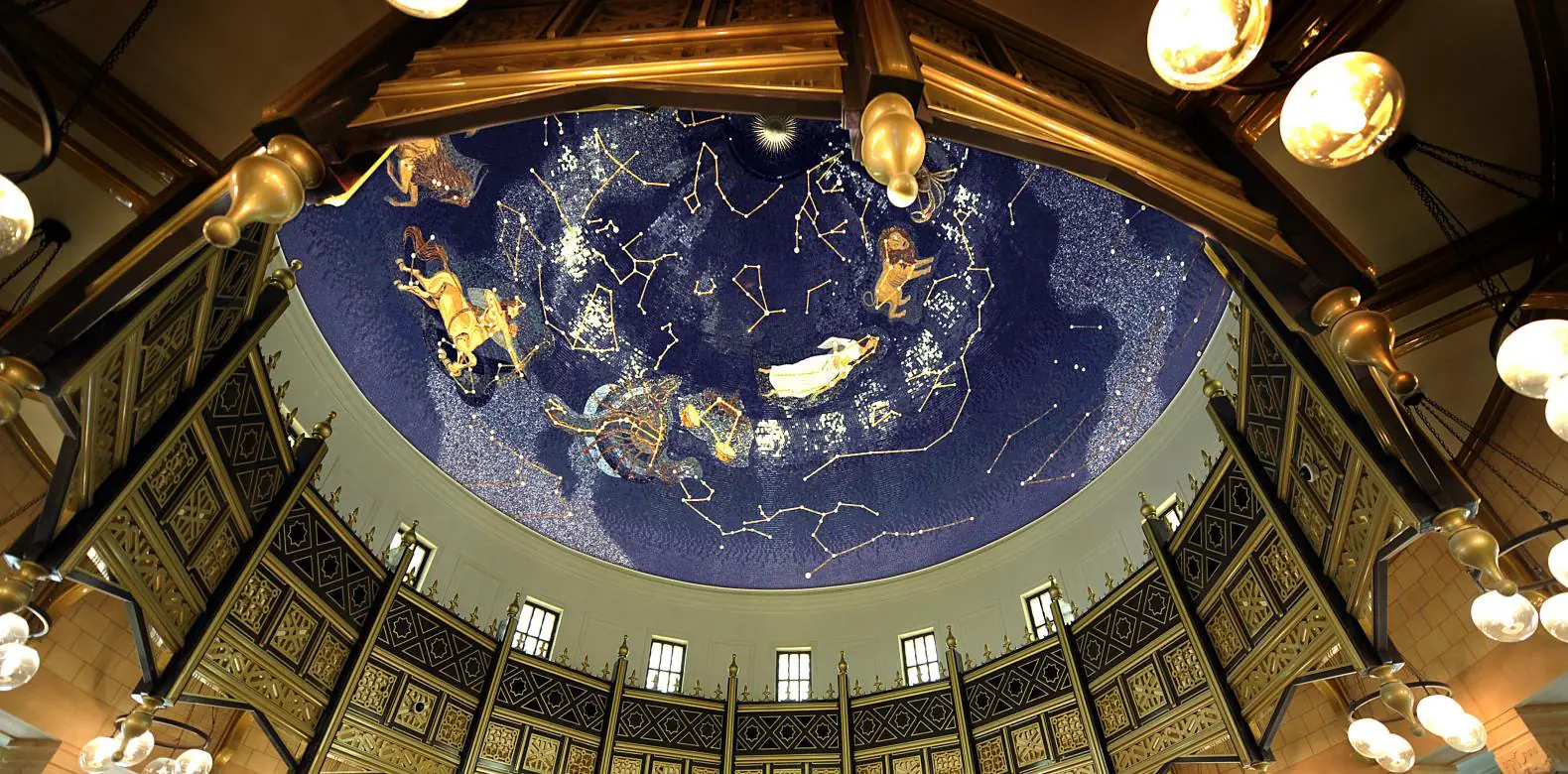
Dubai is a spectacle, to be sure. Something you have to see at least once, like Las Vegas. The glitz, the glam, the glitter of this “City of Gold” are renowned worldwide. The business, the shopping, that 828-metre skyscraper, tallest in the world. What a city.
But that isn’t what I’m looking for as I plot the moves on my next bucket-list adventure. Instead, I am looking for Arabia, for the Emirates, and for the way it all was before the rest of the world rushed in and started building record-setting skyscrapers, lavish resorts on artificial islands, and palatial shopping malls.
Less than 30 kilometres up the Arabian Gulf coast is what I am looking for — Sharjah, the third-largest emirate in the U.A.E. and the country’s cultural capital. How best to know this place, to prime the pump, as it were, before I get there. I asked a few experts, and they steered me toward The Sharjah Museum of Islamic Civilization, the Arabian Wildlife Centre, and the Maritime Museum.
These entities, I’ve been told, are portals on a past that is rapidly fading from everyday view amidst the region’s breakneck pace of modern development.
Ancient Ruins and Archaeological Sites
Set in a beautiful, sand-colored building with a golden dome along the Al-Majarrah Waterfront in the Heart of Sharjah, the Sharjah Museum of Islamic Civilization is home to thousands of artifacts dating as far back as the 7th century AD (the 1st century AH according to Islamic history, which pegs the calendar to a journey the Prophet Mohammed made from Mecca to Medina in 622AD).
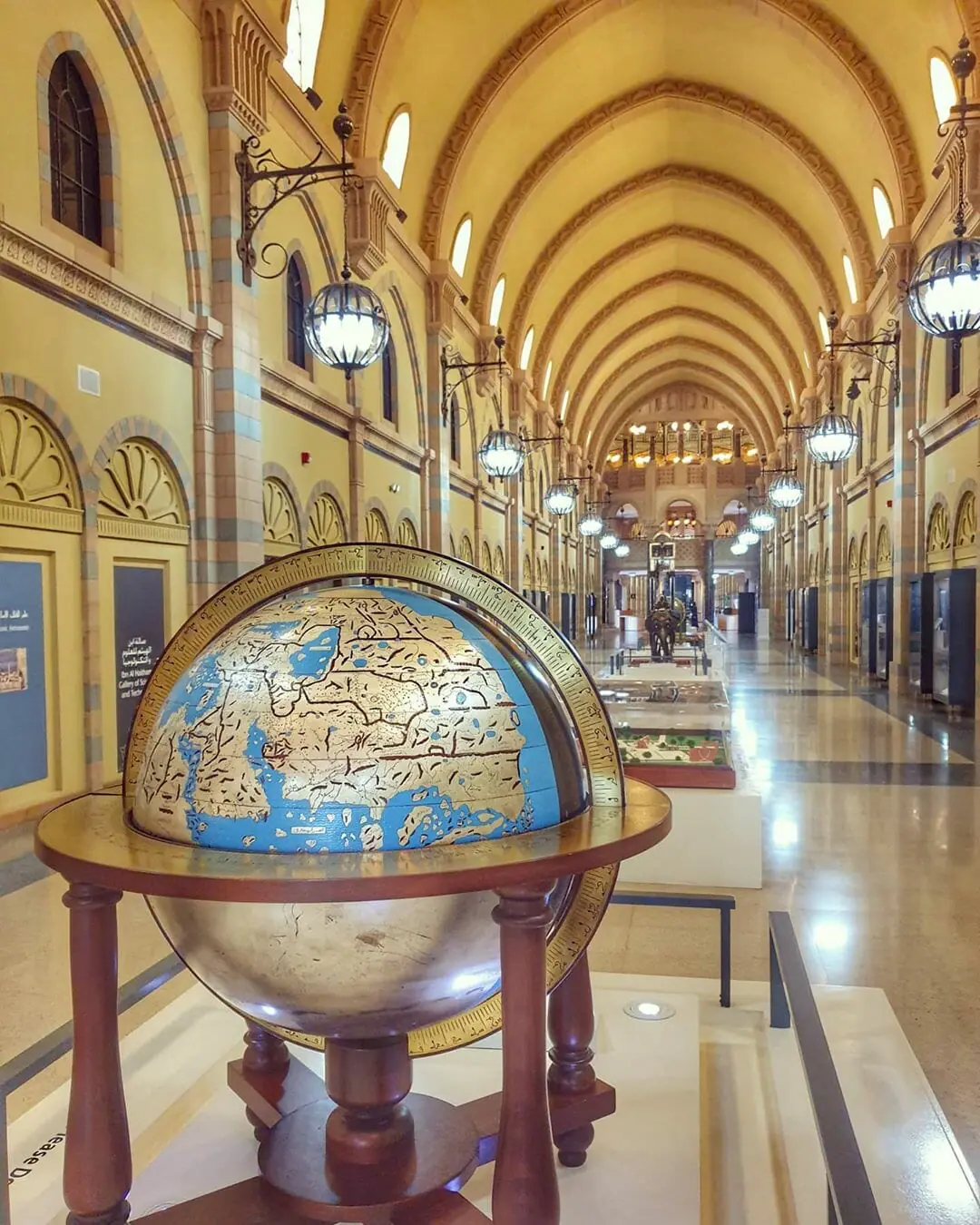 In the Ibn Al-Haytham Gallery of Science and Technology, exhibits track inventions and theories developed by Muslim scholars in all fields, including astronomy, medicine, geography, architecture, mathematics, chemistry, military technology, marine navigation and engineering. (Credit: @raquri428)
In the Ibn Al-Haytham Gallery of Science and Technology, exhibits track inventions and theories developed by Muslim scholars in all fields, including astronomy, medicine, geography, architecture, mathematics, chemistry, military technology, marine navigation and engineering. (Credit: @raquri428)
In addition to four galleries showcasing a range of Islamic artworks, including pottery, metalwork, woodcarving, textiles, manuscripts, and weapons, the museum is also home to a remarkable collection of early Islamic coins. And it draws rave reviews for shining a light on the scientific breakthroughs achieved by Muslim scholars in the fields of astronomy, navigation, medicine, and more.
The museum’s Abu Bakr Gallery of Islamic Faith features rare historical Quran manuscripts, along with detailed exhibits on the Ka’aba, the building at the centre of Islam’s most important mosque in Mecca, Saudi Arabia; the Kiswah, the ornately embroidered fabric that covers the Ka’aba; and other famous mosques from around the Islamic world and Europe.
Arabia’s natural history and geography have also long fascinated me. Desert sands are one of the earth’s least hospitable environments for wildlife, and I’ve always been interested in how animals are able to adapt and gain a foothold in places of such harsh extremes.
Among The Animals
The Arabian Wildlife Centre, with its vast and largely indoor collection of regional snakes, fish, birds, insects, and mammals—including the U.A.E.’s national animal, the Oryx, and the Arabian leopard—appears to be an ideal spot to gain insights into the survival mechanisms of the area’s extraordinary fauna.
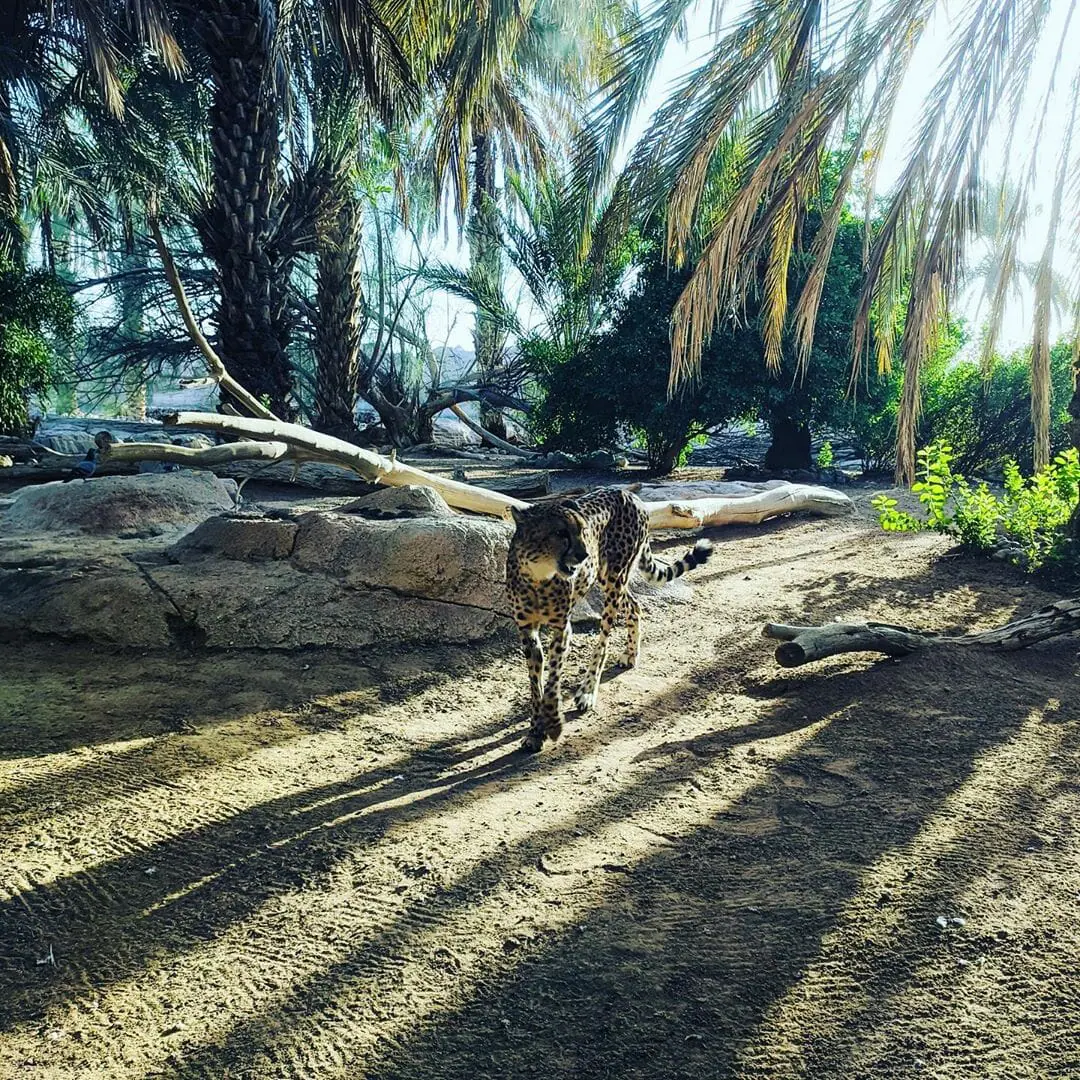 Fewer than 200 Arabian leopards were thought to exist in the wild as of 2006. (Credit: @Jikku Joy)
Fewer than 200 Arabian leopards were thought to exist in the wild as of 2006. (Credit: @Jikku Joy)
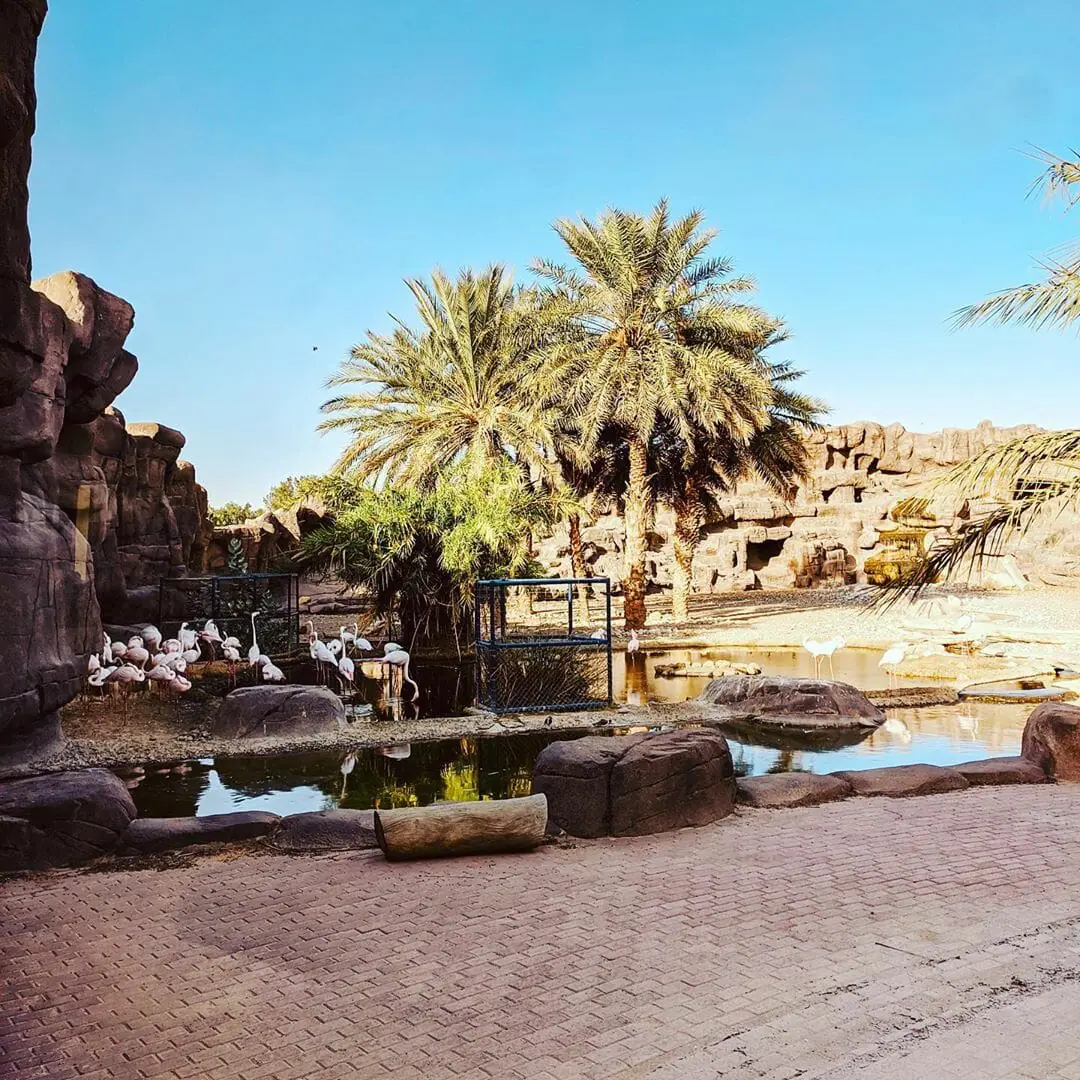 The Arabian Wildlife Centre is part of the Sharjah Desert Park, which also houses botanical gardens, a natural history museum and a children’s farm. (Credit: @Jikku Joy)
The Arabian Wildlife Centre is part of the Sharjah Desert Park, which also houses botanical gardens, a natural history museum and a children’s farm. (Credit: @Jikku Joy)
I’m equally drawn to the somewhat curious, “smaller-ticket” species that thrive in the desert, like the spiny-tailed lizard known locally as the dhup; the fierce-looking camel spider, also called the wind scorpion, which in fact is relatively harmless to humans; and the desert monitor lizard. The wildlife centre is also home to a petting zoo where visitors can feed horses, goats, and, of course, camels, along with a special breeding centre for endangered Arabian wildlife.
Smooth Sailing
Of course, no full exploration of the region’s history can overlook its rich maritime past. Coastal cities have been thriving in the Gulf region over the course of some 6,000 years. The Maritime Museum in Sharjah includes exhibits on traditional fishing methods, the history of pearl diving, and old-world sea songs.
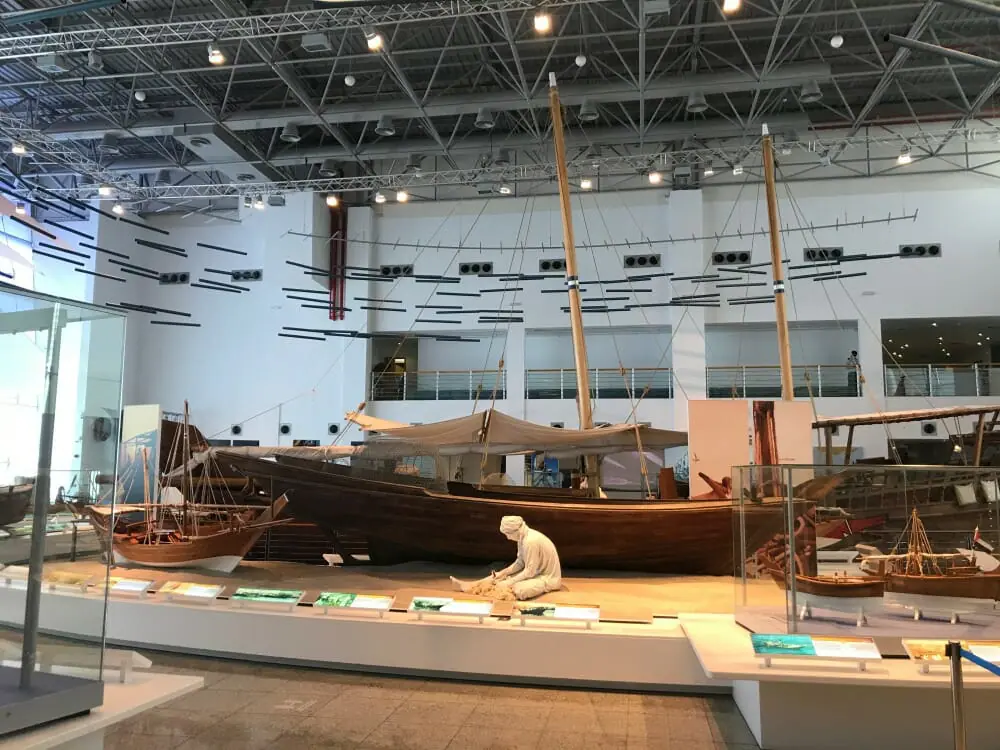 The Sharjah Maritime Museum charts 6,000 years of seafaring on the Arabian peninsula. (Credit: @Amy McGarvey)
The Sharjah Maritime Museum charts 6,000 years of seafaring on the Arabian peninsula. (Credit: @Amy McGarvey)
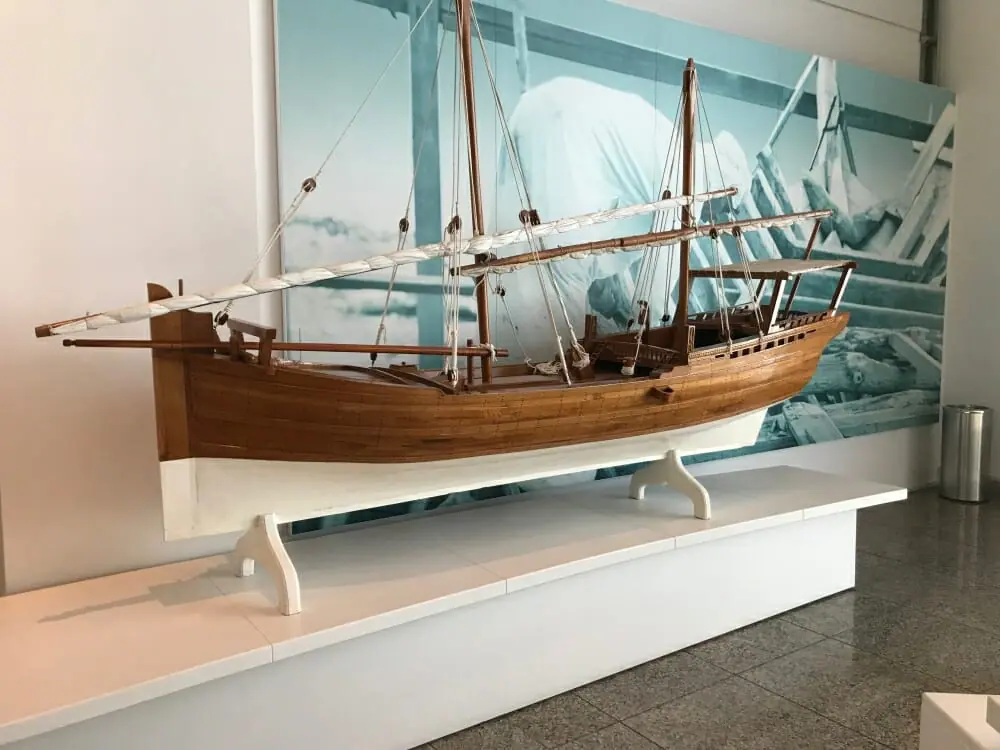 A traditional wooden seafaring dhow, like the one used to establish the fortune of the family at the heart of The Chedi Al Bait, waits for water at the maritime museum. (Credit: @Amy McGarvey)
A traditional wooden seafaring dhow, like the one used to establish the fortune of the family at the heart of The Chedi Al Bait, waits for water at the maritime museum. (Credit: @Amy McGarvey)
The museum also features numerous full-scale model boats, including traditional wooden dhows that are commonly used for fishing, trading, and pearl diving. These types of sailing vessels were integral in helping build the fortune of the Al Midfa family, who lived in Sharjah in the early 20th century. Today, the family’s former homes have been preserved and carefully renovated as part of The Chedi Al Bait, Sharjah, where I plan to stay during my visit to the emirate.
The Al Midfa family’s business interests relied on seafaring (pearling in particular) to such an extent that the Maritime Museum was originally situated (from 2003-2009) in the house of Abdulrahman Al Midfa, in the Heart of Sharjah, before being relocated to the Al Khan area, a short distance across the city.
Cultural Appeals
The Heart of Sharjah cultural heritage project also bears mentioning. The ongoing, 15-year initiative—slated for completion in 2025—seeks to preserve the old town of Sharjah while restoring it to its 1950 state. Many cultural attractions in the city can be found here, and the area has been proposed as a future World Heritage Site.
Adding charm to the quaint destination, The Chedi Al Bait brings the history of the United Arab Emirates to life by converting heritage buildings that are almost a century old and once inhabited by to the prominent Al Midfa family into a new luxury resort. The architecture and design sensitively reflect the Arabic culture and blends harmoniously with the heritage buildings in the district.
Text by Bill Bredesen for GHM Journeys.
Featured image: Opened in 1996, the Sharjah Museum of Islamic Civilization details the culture’s achievements between the 7th and 20th Centuries. (Credit: Sharjah Museums Authority)
First published on 22 September 2020.

